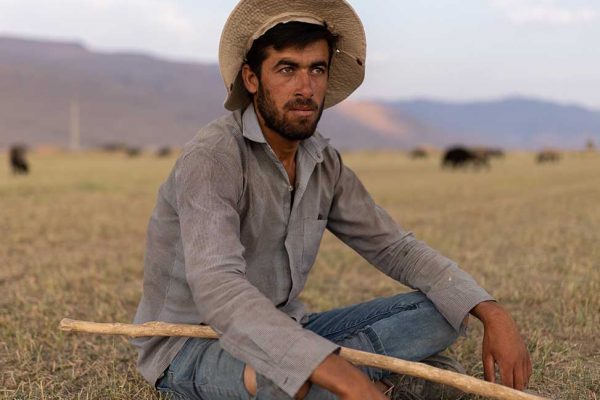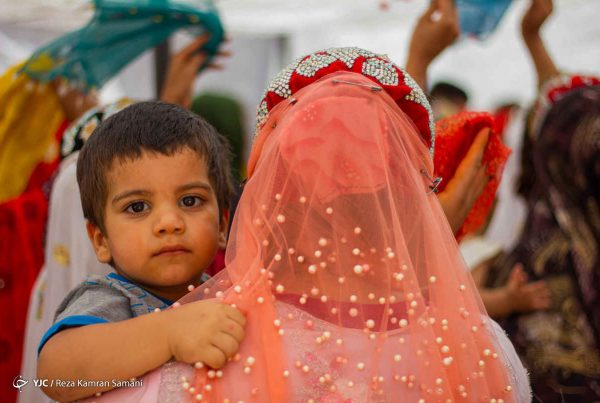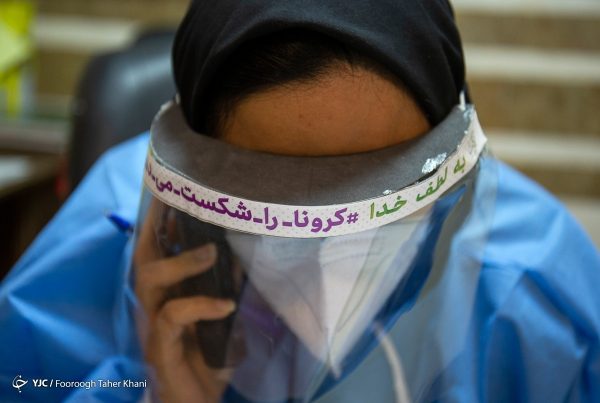“Mohammad is 22. He used to be a livestock farmer in Afghanistan. He emigrated to Iran for work four years ago,” says Shiraz-based photographer, Shayan Sajadian, about the portrait that is part of an ongoing project, temporarily titled “The Lost Identity.” “Mohammad now lives in a village close to Persepolis,” the photographer says. “He has been employed by a livestock owner to graze animals and work as a shepherd for a flock.” The project aims to show the shifting culture, demographics and climate in the historical area that is known today as Marvdasht, southern Fars Province. “Persepolis’s vicinity has always been a place for travelling nomads to rest. Though the number of the nomads has gradually declined as they have mostly decided to settle in villages. One reason for this is a drought resulting from climate change,” he says. “Marvdasht and Persepolis, in particular, are struggling with environmental issues. There are a few centimeters of land subsidence recorded each year in plains around Persepolis and the site itself is nearly located on a fault line.”
«محمد ۲۲ ساله است. در افغانستان دامدار بوده و چهار سال است که برای کار به ایران مهاجرت کرده.» این توصیف شایان سجادیان، عکاس ساکن شیراز، است دربارهی پرترهای که بخشی از پروژهای است با نام موقت «هویت گمشده.» او میگوید: «محمد الان در یک روستا در نزدیکی تخت جمشید زندگی میکنه. یک فرد دامدار او را استخدام کرده تا دامهاش رو برای چرا ببره و چوپان گلهاش بشه.» این پروژه قصد دارد تغییرات فرهنگ، جمعیت و اقلیم را در منطقهی تاریخی مرودشت در استان فارس نشان بدهد. عکاس میگوید: «اطراف تخت جمشید همیشه مکانی بوده که عشایر برای اطراق انتخاب میکردند. الان رفته رفته تعداد عشایری که هنوز کوچ میکنند کمتر شده و بیشتر عشایر یکجانشین شدهاند. یکی از دلایلش هم تغییرات زیست محیطی و خشکسالی است.» او اضافه میکند: «منطقه مرودشت و تخت جمشید هم خیلی شدید درگیر این مشکل است و از همین رو کل دشت اطراف تخت جمشید هر سال چندین سانتیمتر نشست میکند. خود آثار هم کمابیش روی یک گسل قرار دارند.»




